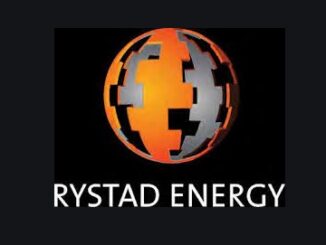Houston — The US oil and gas rig count took a step back, falling 11 to 530 on the week, rig data provider Enverus said April 22 – the first rig count drop this year, even as improving confidence in oil fundamentals continued to percolate ahead of first-quarter 2021 E&P earnings.
Oil rigs fell steeply to 404, down 15 for the week ended April 21, while natural gas-oriented rigs gained four to 126.
And the much-watched giant Permian Basin of West Texas/Southeast New Mexico shed five rigs, leaving 231.
The 11-rig exodus from domestic fields in the past week, after months of weekly increases, was “somewhat surprising,” S&P Global Platts Analytics analyst Taylor Cavey said. “Until we start to see a trend, it will be hard to determine whether or not it is a [mere] blip.”
While the rig count has trended up this year, a drop of the current week’s magnitude may not be unexpected given rig additions among the conventional plays in recent weeks, Cavey said. Also, the week’s decrease was split between vertical oil rigs and horizontal oil rigs, indicating more conventional and unconventional plays.
“From an operator perspective, its hard to say what’s going on as the decline was widespread (large-caps, small-caps and privately-held operators),” Cavey added. “Majors remained flat week on week. Meanwhile, horizontal gas rigs increased by four, led by the Marcellus and Utica,” two Appalachian-area gas-weighted shale plays.
600-plus rigs by year-end?
Platts Analytics is forecasting that total rigs will breach the 600 level by the end of 2021.
Also, the US hydraulic fracturing spread, or unit, count is 220 this week, compared to 315 operating pre-coronavirus pandemic. The “frac” count indicates well completions ahead of placing the wells on production.
Rig counts in other large US basins mostly moved up or down by a single rig, although the Marcellus Shale, mostly in Pennsylvania, gained three rigs for a total 35.
Otherwise, the gas-prone Haynesville Shale of East Texas/Northwest Louisiana, and the Utica Shale largely in Ohio, each gained a rig for respective totals of 48 and 14.
Losing a rig each were the Eagle Ford Shale of South Texas, the SCOOP-STACK play of Oklahoma, the Bakken Shale of North Dakota/Montana and the DJ Basin of Colorado. That left the Eagle Ford with 43 rigs, the SCOOP-STACK with 16, the Bakken with 15 and the DJ with 12.
Halliburton comments spur optimism
Predictions by oilfield services provider Halliburton April 21 that North American activity would gain momentum the rest of this year, while international activity would pick up steam in second half of 2021, added confidence to steadily upticking rig numbers, save for two weeks of a brutal US freeze in mid-February.
While operators in domestic fields began to add rigs starting last July to replace production declines from shut-ins and curtailments at the height of the pandemic, the rig count’s upward trend continued this year as oil marched toward, and eventually topped, $60/b.
But E&Ps have still pledged not to over-spend capital on production growth, which many public companies are keeping at modest single digits this year. That compares to a few ago in the double digits and certainly five to 10 years ago when shale oil was accelerating at what felt like breakneck speed.
Smaller companies, which have a lower output base, appear a little more growth oriented, but still disciplined in spending.
According to S&P Global Platts, commodity prices were up for the week ended April 21. WTI averaged $62.75/b, up $2.36, WTI Midland averaged $63.19/b, up $2.45/b and Bakken Composite was up $61.85/b, up $2.10.
For natural gas, prices at Henry Hub averaged $2.64/MMBtu, up 16 cents, while at Dominion South the average was $2.19/MMBtu, up 38 cents.
“Something feels right about $60-$65 [per barrel] oil as E&P management teams heed the creed of capital discipline,” Evercore ISI analyst James West said in an April 16 investor note. “As much as oilfield services craves the incremental capex dollar from upstream customers, the mantra of moderate growth enables better long-term strategic planning and better cash flow visibility.”




